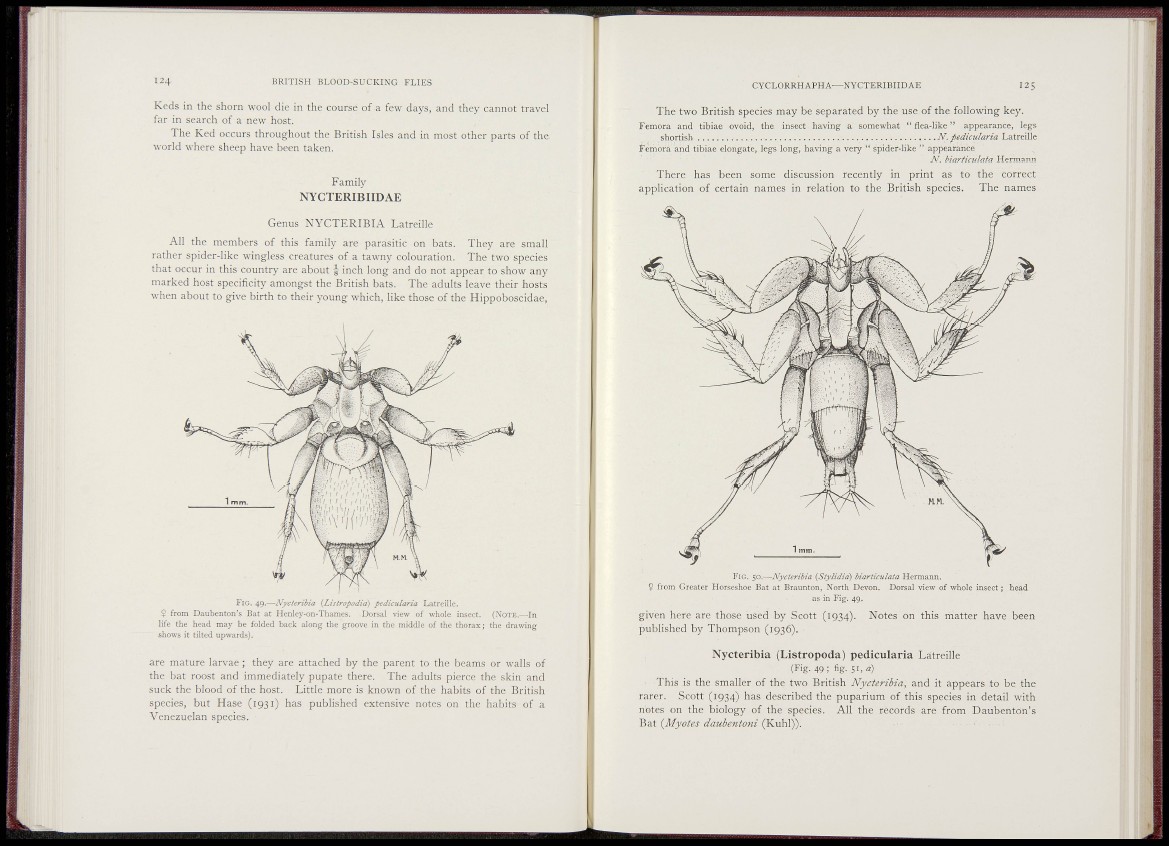
124 BRITISH BLOOD-SUCKING FLIES
k e d s in the shorn wool die in the course of a few days, and they cannot travel
far in search of a new host.
The Ked occurs throughout the British Isles and in most other parts of the
world where sheep have been taken.
Family
NYCTERIBIIDAE
Genus NYCTERIBI A Latreille
A l l the members of this family are parasitic on bats. They are small
rather spider-like wingless creatures of a tawny colouration. The two species
that occur in this country are about f inch long and do not appear to show any
marked host specificity amongst the British bats. The adults leave their hosts
when about to give birth to their young which, like those of the Hippoboscidae,
FIG. 49.—Nycteribia {Listropodia) pedicularia Latreille.
? from Daubenton's Bat at Henley-on-Thames. Dorsal view of whole insect. (NOTE,—In
life the head may be folded back along the groove in the middle of the thorax; the drawing
shows it tilted upwards).
are mature larvae ; they are attached by the parent to the beams or walls of
the bat roost and immediately pupate there. The adults pierce the skin and
suck the blood of the host. Little more is known of the habits of the British
species, but Hase (1931) has published extensive notes on the habits of a
Venezuelan species.
CYCLORRHAPHA—NYCTERIBIIDAE 125
The two British species may be separated by the use of the following key.
Femora and tibiae ovoid, the insect having a somewhat " flea-like " appearance, legs
shortish N. pedicularia Latreille
Femora and tibiae elongate, legs long, having a very " spider-like " appearance
N. biarticulata Hermann
There has been some discussion recently in print as to the correct
application of certain names in relation to the British species. The names
FIG. 50.—Nycteribia {Stylidia) biarticulata Hermann.
$ from Greater Horseshoe Bat at Braunton, North Devon. Dorsal view of whole insect; head
as in Fig. 49.
given here are those used by Scott (1934).
published by Thompson (1936).
Notes on this matter have been
Nycteribia (Listropoda) pedicularia Latreille
(Fig. 49 ; 51,
This is the smaller of the two British Nycteribia, and it appears to be the
rarer. Scott (1934) has described the puparium of this species in detail with
notes on the biology of the species. All the records are from Daubenton's
Bat {Myotes daube7tto7ti (Kuhl)).